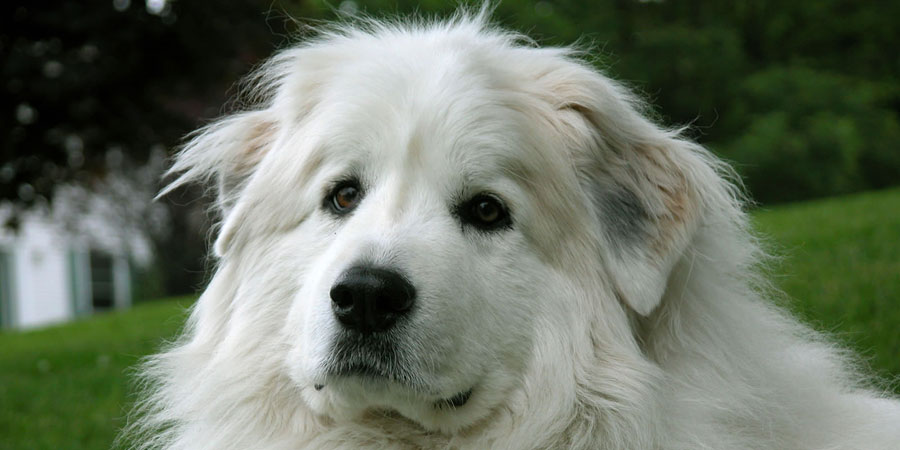

Great Pyrenees, Patou, Chien Des Pyrénées, Chien De Montagne Des Pyrénées, Montañés Del Pirineo, Gos De Muntanya Dels Pirineus
Overview
Elegant, imposing and majestic, the Great Pyrenees is a large dog of medium substance that is slightly longer than tall. Its thick coat gives the impression of heavier bone and stature. This breed was developed to guard flocks on steep mountain slopes and so must combine strength with agility. It moves smoothly, with good reach and drive. Its weather-resistant double coat consists of a dense, wooly undercoat and a long, flat, coarse outer coat, imparting great insulation from the Pyrenean cold. Its expression is elegant and contemplative.
The Great Pyrenees is a capable and imposing guardian, devoted to its family and somewhat wary of strangers — human or canine. When not provoked, it is calm, well-mannered and somewhat serious. It is very gentle with its family and children. It has an independent, somewhat stubborn, nature and may try to dominate a less secure owner. Some are not good off leash and may wander away. The Great Pyrenees tends to bark a lot.
| Size | Giant |
| Height | Male: 27-32 inches (69-81 cm)Female: 25-29 inches (63-74 cm) |
| Weight | Male: from 100 pounds (45 kg)Female: from 85 pounds (38 kg) |
| Lifespan | 10-12 years |
| Colors | White |
| Origin | France Spain |
| Classification | Purebred |
| Good Lapcat |
| Good In Apartments |
These dogs are not recommended for apartment life and would do best with a mid-to-large sized yard. They need space, but adapt well to family life. They are not really active indoors, but need regular exercise outdoors. A fence is a must as they may wander away in search of the borders to what they believe is their territory. Puppies are very active and might have the tendency to wander off or escape. Prefer cool climates. |
| Good With Children |
Good with Kids: This is a suitable dog breed for kids. It is also friendly toward other pets and shy toward strangers. |
| Good With Dogs |
|
| Good With Cats |
|
| Exercise Needs |
Pyrenees need plenty of exercise to stay in shape. If they are not actively working as flock guardians, they need to be taken on a daily, long brisk walk. |
| Trainability |
Difficult Training: The Great Pyrenees is very sensitive to the tone of its trainer’s voice. Training must be calm, consistent, and patient, but Great Pyrenees will be obedient once trained. They may run away off the leash, so proper precautions should be taken. |
| Affectionate |
|
| Playfulness |
|
| Grooming Requirements |
Moderate Maintenance: Grooming should be performed regularly to keep its fur in good shape. Occasional trimming or stripping needed. |
| Shedding |
Constant Shedding: The Great Pyrenees requires weekly grooming with a brush and comb, daily when shedding. |
| Vocalization/Barking |
Frequent |